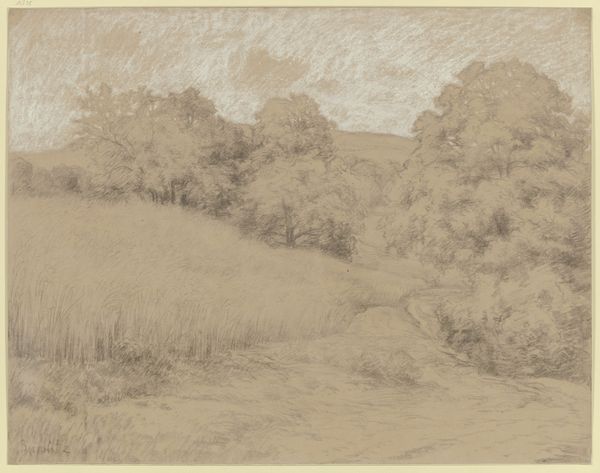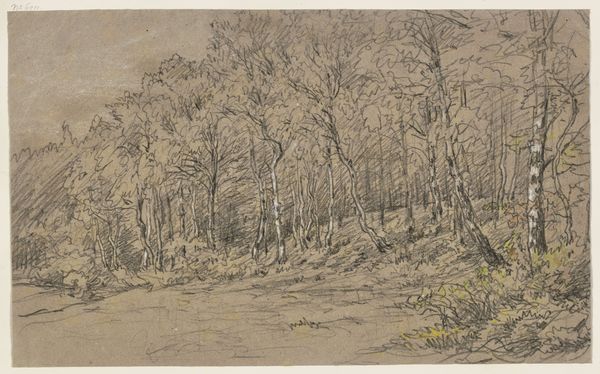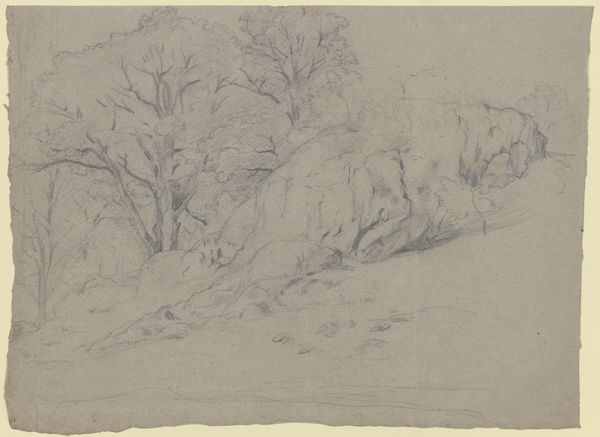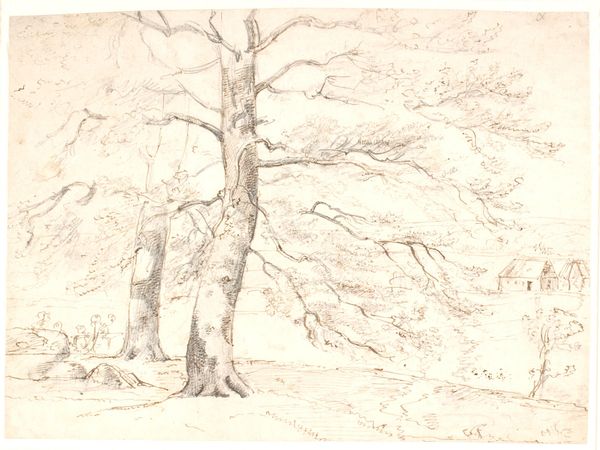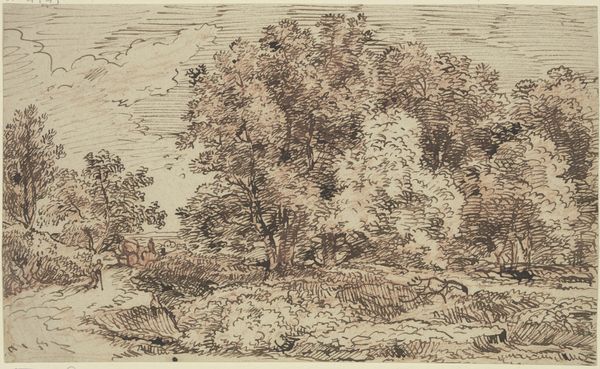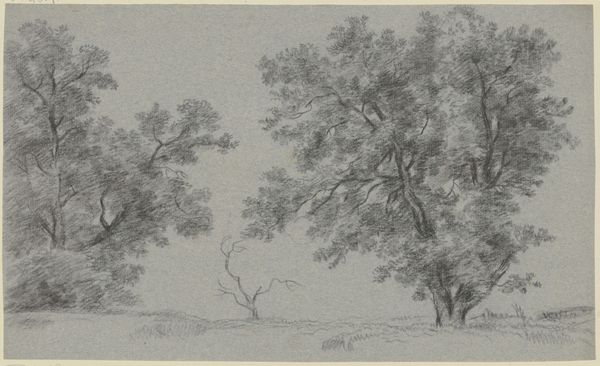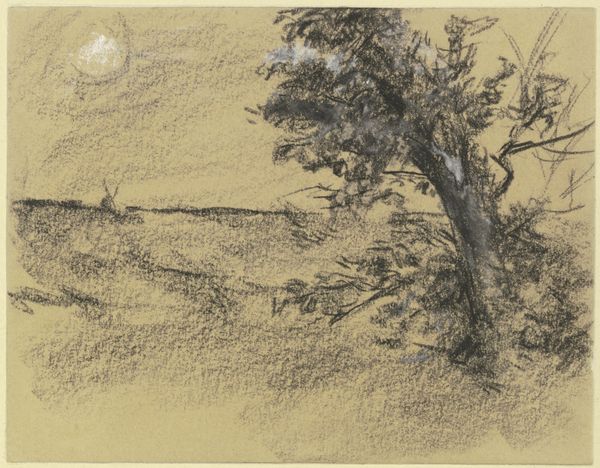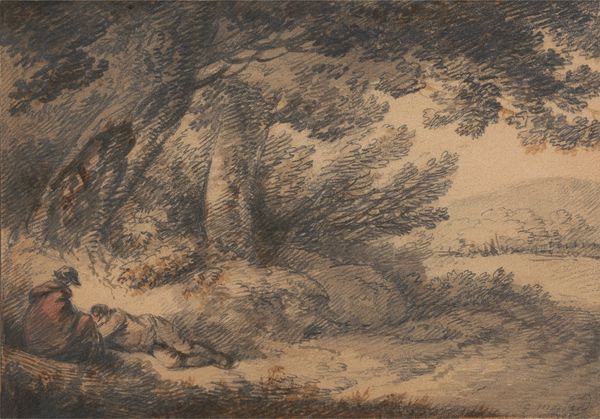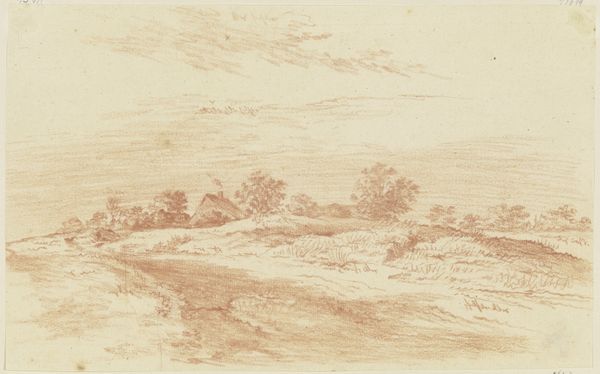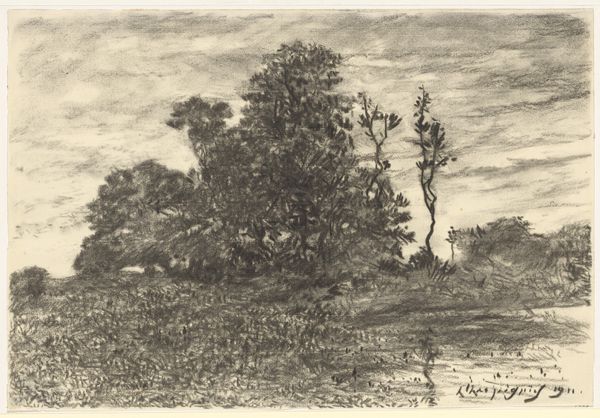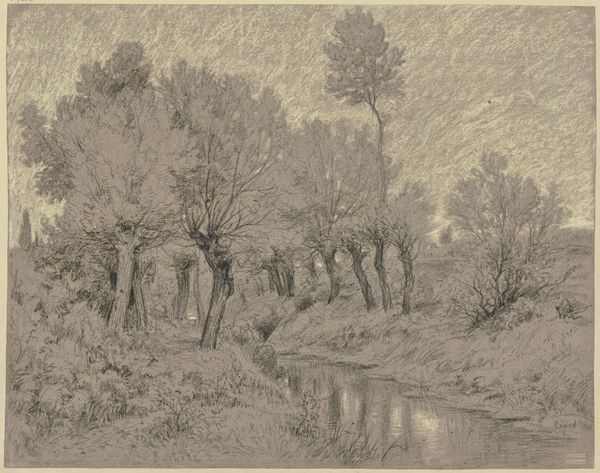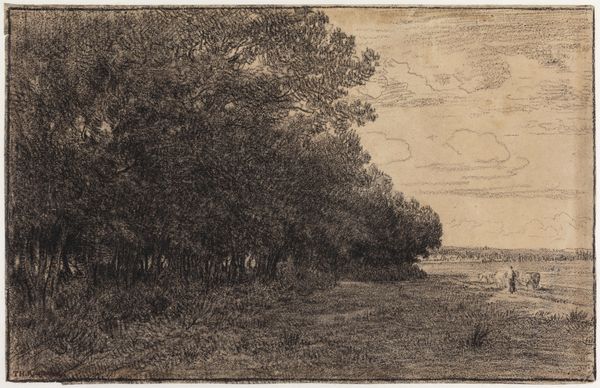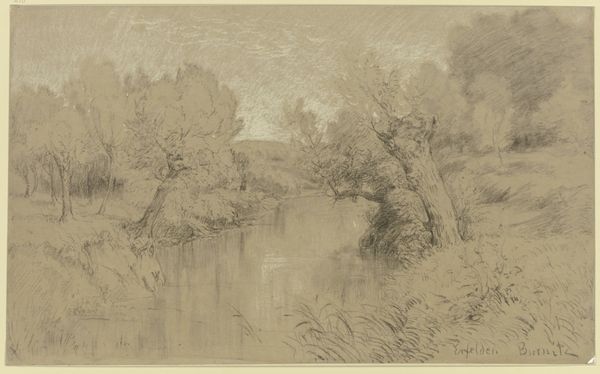
Copyright: Public Domain
Curator: This work, "Hohlweg in Burgund mit Baumwerk zur linken Seite," or "Hollow Path in Burgundy with Trees on the Left," was created in 1856 by Karl Peter Burnitz. Editor: It feels somber, almost monotone, yet with a surprising depth. The way the path winds its way into the distance creates a real sense of being there, but what's most striking is the stark materiality of the paper contrasting the tree foliage. Curator: Yes, the starkness certainly enhances the texture. Burnitz primarily used pencil, charcoal, and chalk on paper. The labor intensive act of layering those different materials gives the foliage life despite the limited palette. There's also a textural play with how the trees and foliage contrast with the smoother treatment of the sky, suggesting it was produced with visible, almost rushed strokes, which also affects the work's social context. Editor: That's an interesting observation about the textural contrasts. The path, leading into the hills, evokes ideas of journey, struggle, perhaps even a veiled critique of land ownership and its impact on rural communities at that time. Romanticism wasn't just about pretty landscapes; it often highlighted the complex relationship between humans and the natural world. Consider, too, the era, where industrialization prompted a turn toward landscape paintings as emblems of lost identity and the burgeoning loss of our original landscape and environment. Curator: Absolutely, the very means by which Burnitz crafted this landscape also speaks to class dynamics. Graphite, chalk, charcoal – relatively accessible materials then compared to say, oil paints. This aligns with broader Romantic notions of elevating craft and finding value in what’s immediately available, not necessarily luxurious. Editor: Right, and thinking of who these landscapes were made for – affluent city dwellers perhaps longing for an idealized countryside, far removed from the realities faced by rural workers. Curator: A landscape purchased and consumed like a luxury item. This reframes Burnitz's work in a contemporary consumer context. Editor: Exactly. It becomes not just a serene vista, but an intersectional text of economic disparity and perhaps environmental unease – themes resonating even more powerfully today. Curator: I see it now, an emphasis on both accessible media and environmental context. Well, this dialogue certainly gave me a deeper appreciation for the way these layers intersect. Editor: And for me, thinking about the artmaking process in terms of socio-political dialogue enriches our understanding and expands how we view its relationship to the landscape today.
Comments
No comments
Be the first to comment and join the conversation on the ultimate creative platform.
